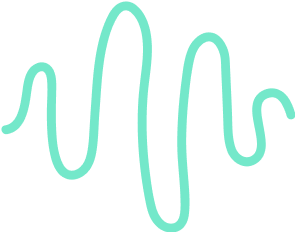How to record an audio for an optimal transcription ?

Research Interviews Made Easy
Interview transcription, question trackers, structured reports, and more
If you are a transcriptionist, you should be aware that the quality of the audio you have available strongly influences the transcription of the file and depends on many factors that can be anticipated.
In this article, we have gathered all the necessary ingredients to make your next recordings real audio files perfectly exploitable for your transcriptions !
Choosing the right environment for your audio transcription 🌱
Before you start recording, you should make sure that your environment is suitable for recording: the objective here is to fight as much as possible against background noise that could interfere with your recording. Don't worry, it is quite normal for some noise to persist, despite impeccable silence: complete silence is therefore not an option.
However, you can always make sure that from outside the room you are in, people understand that you need silence. A message to your colleagues positioned outside the room will ensure that no one will interrupt your recording. In addition, don't hesitate to ask all participants to mute all their devices (phones, computers…) and even to turn off some noisy equipment such as fans or printers. If a device is very loud, such as a computer with a built-in fan, try to place it as far away from the microphone as possible: this will prevent the noise caused by the device from overpowering the voices.
Maintain a perfect distance between the speakers and the microphone during the audio transcription ↔️
In order for the voices to be recorded perfectly, you must ensure that there is a perfect distance between your employees and the microphone.
Indeed, too great a distance could cause you to lose a lot of essential information. Your microphone might not detect certain parts and this could be a crucial loss of information during your transcriptions.
Also, make sure that your employees are not too close: in this case, breathing noises could be recorded. In general, the ideal distance is around 10 centimeters, but this will depend on the microphone you use. Also, if you are using your phone as a microphone, remember that it can be placed closer to the person you are talking to, as the quality of its built-in microphone may be lower than that of special microphones. If this is not possible, you can always turn the phone towards the person speaking.
Guarantee the quality of your microphone for your audio transcription🎙

Of course, the quality of a recording will always depend on the quality of your microphone. It is not necessarily necessary to invest in a high-end microphone that will be expensive. More affordable microphones will allow you to make very good quality recordings! When it comes to choosing a microphone, there are many options available to you: you just have to choose the one that best suits your needs!
Some people will opt for a tie microphone, which is easier to use during interviews or discussions, while others will opt for a table microphone, which can be placed between all the speakers and is perfectly useful during a meeting with several people.
A Dictaphone can also be used since it allows a high quality recording, especially when it is close to the person speaking. Finally, cell phones and computers can also be used as microphones: most of these devices are now equipped with voice recording software and of course a microphone.
Respecting everyone's word during the audio transcription🗣
While it goes without saying that you should respect everyone's speech, you should particularly apply this rule when making voice recordings. It will be much easier to make a transcription of your interview if you can distinguish perfectly between what each person is saying. This will also help you to pace your participation.
Take advantage of its transcript💡
With Noota, you can record your meetings and interviews and upload them directly to our platform. In just a few minutes, we will transcribe your audio into text, keeping the structure you want: interview, meeting, course or conference !
By following all the advice we have listed in this article, you will allow our platform to carry out your transcription in optimal conditions. The quality of your audio file will be significantly improved, we will find it easier to transcribe it and, as a result, you will have far fewer changes to make !
Moreover, with automatic transcription, you no longer waste time transcribing your exchanges and can directly share your transcribed exchanges with all your colleagues. A few clicks are all it takes to complete a task that used to take you several hours! Start transcribing for free
Research Interviews Made Easy
Interview transcription, question trackers, structured reports, and more
Related articles

Forget note-taking and
try Noota now
FAQ
In the first case, you can directly activate recording as soon as you join a videoconference.
In the second case, you can add a bot to your videoconference, which will record everything.
Noota also enables you to translate your files into over 30 languages.

.svg)
.svg)
.webp)

.png)


.svg)
